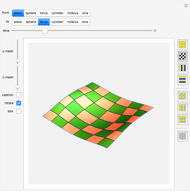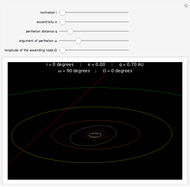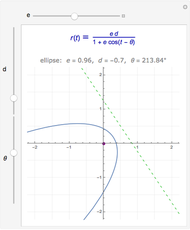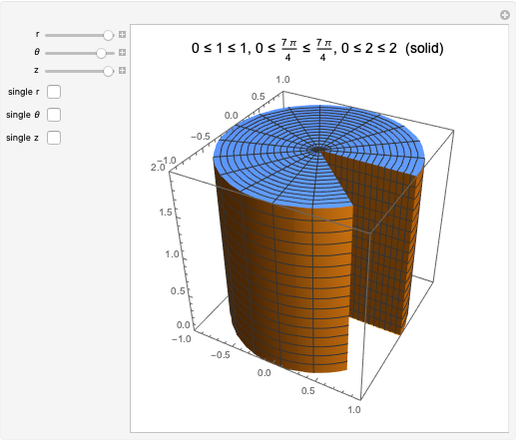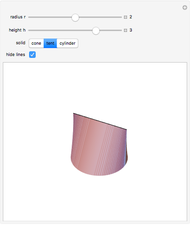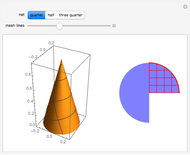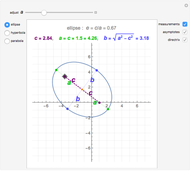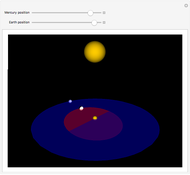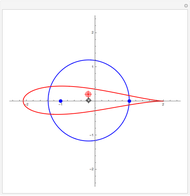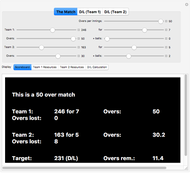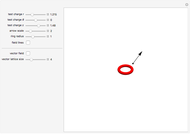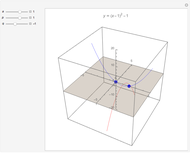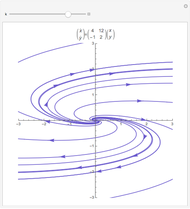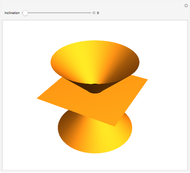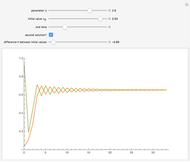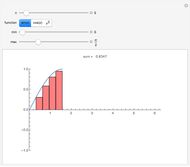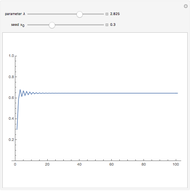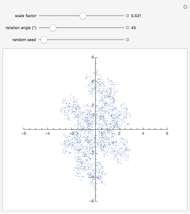Conic Sections: The Double Cone

Requires a Wolfram Notebook System
Interact on desktop, mobile and cloud with the free Wolfram Player or other Wolfram Language products.
The quadratic curves are circles, ellipses, parabolas, and hyperbolas. They are called conic sections because each one is the intersection of a double cone and an inclined plane. If the plane is perpendicular to the cone's axis, the intersection is a circle. If it is inclined at an angle greater than zero but less than the half-angle of the cone, it is an (eccentric) ellipse. If the plane's inclination is equal to this half-angle, the intersection is a parabola. If it exceeds the half-angle, it is a hyperbola.
[more]
Contributed by: Phil Ramsden (March 2011)
Open content licensed under CC BY-NC-SA
Snapshots
Details
Mathematical note: If the half-angle of the cone is  then the eccentricity of the intersection is
then the eccentricity of the intersection is  , where
, where  is the angle of inclination of the plane. Its projection in the
is the angle of inclination of the plane. Its projection in the  plane is also a conic section, with focus at the origin and eccentricity
plane is also a conic section, with focus at the origin and eccentricity  . Note that the eccentricity of the intersection and of its projection are equal for precisely two values of
. Note that the eccentricity of the intersection and of its projection are equal for precisely two values of  , namely 0 and
, namely 0 and  , corresponding to eccentricities of 0 and 1, and thus to the circle and parabola, respectively.
, corresponding to eccentricities of 0 and 1, and thus to the circle and parabola, respectively.
Snapshot 1: circle
Snapshot 2: ellipse
Snapshot 3: parabola
Snapshot 4: hyperbola
Permanent Citation
"Conic Sections: The Double Cone"
http://demonstrations.wolfram.com/ConicSectionsTheDoubleCone/
Wolfram Demonstrations Project
Published: March 7 2011






